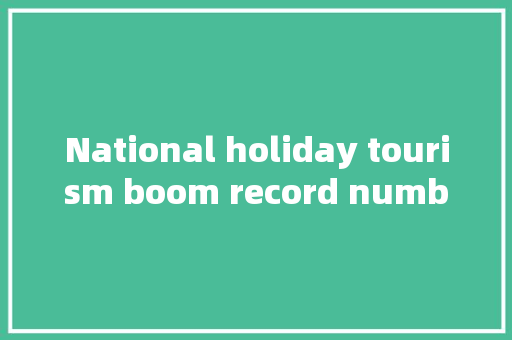Tourism was, as expected, a popular way to spend this year's National Day holiday from September 29 until October 6. Domestic tourist numbers increased by 71.3 percent compared to the previous year and 4.1 percent compared to pre-pandemic 2019. This year, 826 million tourists generated 750 billion yuan (US0 billion) in revenue.
Tourist destinations were crowded, with tickets for popular attractions such as the Great Wall and Sanxingdui Museum selling out. Long queues were common. The influx of tourists meant waits of up to three hours for shuttle buses.

Even lesser-known areas experienced a surge in visitors this year. Yanbian Chaoxianzu (Korean) Autonomous Prefecture in Northeast Jilin Province saw a tenfold increase in popularity on online travel agencies like Tujia. Surrounding cities like Qiqihar, Yinchun, and Jiamusi in Heilongjiang Province also witnessed increased tourism, driven by travelers looking for an exotic experience and interesting food.
Air ticket prices dropped by more than 30 percent, especially for mid and long-haul routes, with many people hunting for bargains online. High-end hotels offered rates as low as 500 yuan per night, with bookings for luxury hotels increasing faster than budget accommodation.
The rise of city walking tours led to many visits to food markets. Travelers were drawn to the vibrant and bustling atmosphere, as well as the opportunity to taste local delicacies. This trend also attracted artists, with popular exhibitions in markets alongside vegetables and fruit.


